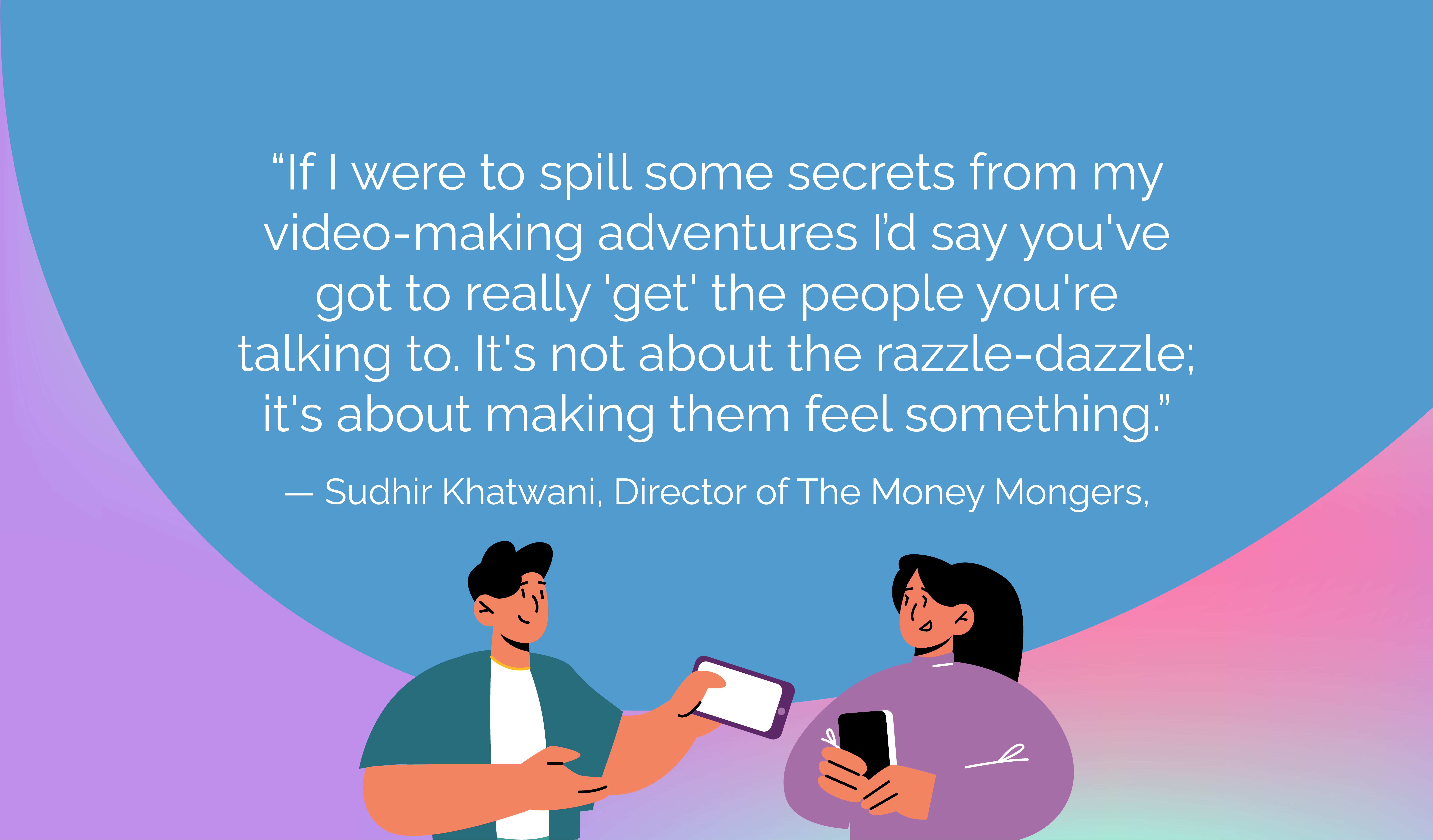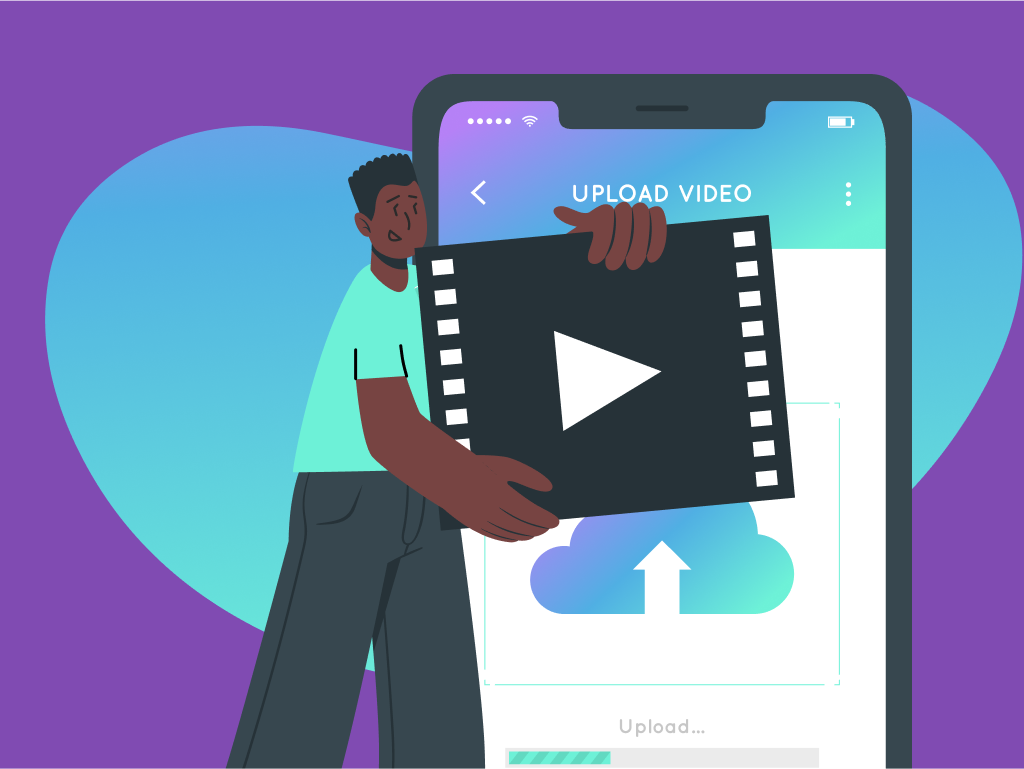The year is 2023, and video advertising has become an indispensable tool for marketers. Video ad spend is on the rise, projected to grow from $176.60 billion this year to $229.80 billion by 2027. Moreover, 91% of businesses are using video ads as a marketing tool. Video ads offer a captivating and effective way to convey your brand’s message, but with the increasing competition, knowing how to stand out and engage your audience is imperative. Below, we delve into the reasons behind the effectiveness of video ads and provide video ads best practices for creating more compelling, engaging, and ROI-driven campaigns.
Why Are Video Ads So Effective?
The effectiveness of video ads can be attributed to several key factors. First, our brains can process images in as little as 13 milliseconds. In contrast, reading a single word takes around 250 milliseconds, making video easier to engage with than text. Secondly, in the modern age of short attention spans, where people would rather scroll through videos than read long- or short-form content, video ads provide a quick and captivating way to convey your message.
In addition, video ads excel in storytelling, making even complex topics entertaining and relatable. A recent example of this is Apple’s sustainability report video, which some labeled a ‘storytelling gem.’ Lastly, with the average person spending 17 hours per week viewing video content, there are many opportunities to tap into this marketing goldmine.

12 Video Ads Best Practices to Boost Your ROI
Video ads are powerful, but it’s crucial to recognize that they are not created equal; some will leave your audience scrolling past your content. You must employ certain best practices to create video ads that resonate with your audience and make a lasting impact. Here are our top 12 video ads best practices.
1. Make the First 3 Seconds Count
The first three seconds of your video are make-or-break. Why? Because attention spans are shorter than ever. When viewers scroll through their YouTube feeds or streaming platforms, for example, they’re bombarded with content. Your video content must stand out immediately to grab attention, so make the first three seconds count.
As Michael Wall, the founder of Codefixer, highlights, “I’ve discovered as a video marketer that the initial few seconds of your ad are quite important. The audience may skip ahead or click away if you fail to capture their interest right away. Because of this, it’s critical to make a compelling opening remark that will pique their interest.
To make the first few seconds of your video count, consider these strategies:
- Start with a compelling visual or a question.
- Tease the main message without giving it all away.
- Use text overlays or motion to entice viewers to stay.
2. Keep It Short
Less is often more when it comes to video ads. Per the Vidyard Video in Business Benchmark Report, 66% of users will watch a business-related video until the end if it’s under 60 seconds long. While this doesn’t mean every video should be a minute or less, it underscores the importance of conciseness.
The key to keeping it short is to focus on your core message. Strip away any unnecessary content and distractions — each moment in your video should add value and engage the viewer. Michael Well echoes this by saying, “Shorter videos typically outperform longer ones. People have limited attention spans, so you must clearly and effectively communicate your point. Concentrate on the most crucial details and refrain from including extraneous material.”
3. Make It Make Sense Without Sound
69% of people watch videos with the sound off, whether they’re in public spaces or simply prefer silent browsing. So, you must ensure your message is clear and engaging, even in mute mode.
Consider the following:
- Use compelling, high-quality imagery and visuals that tell a story even without audio.
- Implement closed captions to provide context and accessibility. Max Benz, Founder and CEO at BankingGeek, emphasizes their importance, stating, “Captions are crucial since they can increase views by up to 40% by catering to a wider audience.”
4. Tap Into Emotions
Effective video ads are the ones that make people feel something. Whether you appeal to humor, values, aspirations, or pain points, evoking emotion can leave a lasting impression.
For instance, UK retailer, John Lewis, has become renowned for its iconic, tear-jerking Christmas ads, which consistently tug at heartstrings. Additionally, research suggests that anger is the most effective emotion for spurring climate action, showcasing the diverse range of emotions you can tap into for your video advertising campaigns.
Sudhir Khatwani, Director of The Money Mongers, Inc., has firsthand experience of just how powerful emotions are as a marketing tool. “If I were to spill some secrets from my video-making adventures, I’d say you’ve got to really ‘get’ the people you’re talking to. It’s not about the razzle-dazzle; it’s about making them feel something. And honestly? Keep it real. People can tell when you’re putting on a show,” he quips.

5. Use the Power of Storytelling
As Magee Clegg, the founder and CEO of Cleartail Marketing, advises, “An engaging story is crucial. People connect more with stories than with raw facts or sales pitches.” Max Benz further underscores this, “Storytelling is a powerful asset in video ads. Imagination, dynamism, strong plotline, and emotional appeal are key elements here.”
Humans are wired to respond to stories. They engage our emotions, making us more likely to remember and act on the message. Stories also release dopamine, the “feel-good” chemical that can spur people to act.
One outstanding example of good storytelling is Iceland’s “Rang-tan” ad, which not only raised awareness about palm oil but also increased sales and lifted the supermarket’s consideration score.
When it comes to getting your storytelling right, Michael Well has a handy tip, “Be sure to keep your target audience in mind as you write your story. What are they battling? What are their aspirations? How may your offering assist them in achieving their objectives? You’ll be well on your way to making a video that emotionally connects with viewers if you can successfully answer these questions.”
6. Keep Mobile in Mind
Mobile optimization is super important. Consider this: three out of five YouTube video views occur on mobile. Furthermore, in the US alone, 68% of video content is viewed on a smartphone, compared to 61% on a smart TV, and 43% on a laptop. With a significant portion of video views occurring on mobile devices, catering to this audience is crucial.
Consider these mobile-focused strategies:
- Optimize ad creatives for both mobile and desktop, ensuring your content adapts seamlessly to different screen sizes.
- Use square or vertical video formats for optimal mobile viewing.
- Understand the mobile viewing habits of your target audience to tailor your content accordingly.
7. Put Your Brand Front and Center
Making your brand name, logo, and message visible at the start of your video is essential. Research by Meta found that three times more people engage with an ad when the brand name, logo, and message are presented clearly in the first ten seconds.
Introducing your brand early in the video establishes brand recognition and ensures that viewers immediately associate the content with your business. This can increase engagement and brand recall.
Michael Well highlights the importance of highlighting your brand, saying, “Customers buy brands rather than specific things.” He adds, “Because of this, it’s critical to highlight the virtues and qualities of your company in your video advertisement. Your chances of converting viewers into devoted clients increase when you establish a closer connection with them.”
8. Set Clear Campaign Objectives
Before creating your video ad, it’s vital to define clear campaign objectives. These objectives will guide your content creation and provide a benchmark for success. Common marketing objectives include increasing website traffic, sales, brand awareness, and brand consideration, and generating online conversations about your brand or ad.
These objectives serve as the foundation for your video ad strategy, dictating the content and approach you’ll take.

9. Provide a Customized CTA
Each video ad should have a well-defined call to action (CTA) that aligns with your campaign objectives. Before creating the ad, know what action you want viewers to take. Whether it’s visiting your website, making a purchase, signing up for a newsletter, or something else, make it clear and actionable.
Here are some CTA best practices:
- Stick to one CTA per ad to avoid overwhelming viewers.
- Keep your CTA concise to make it memorable.
- Make it easy for the viewer to take action, ensuring a seamless transition from watching to acting.
10. Test and Optimize
Continuous testing and optimization are crucial for refining your video ad strategy. This involves experimenting with different ad formats, custom audience segments, bid amounts, placements, and more.
By monitoring the performance of your video ads and making data-driven adjustments, you can fine-tune your video ad campaigns, ensuring they remain effective and helping you stay competitive.
11. Follow up with Retargeting
Retargeting is an essential component of your video ad strategy that keeps your business top of mind and encourages ad viewers to take the next step in their customer journey. This technique can significantly boost your conversion rates and ROI.
Let’s have a look at the numbers:
- Three out of four consumers notice retargeted ads.
- First-time website visitors only convert 2.4% of the time, and 48% of all e-commerce transactions come from returning visitors. Returning visitors also put items in their cart at nearly double the rate — 14.8% versus 7.6% — of first-time visitors.
- Retargeted users are eight times cheaper to reach per click.
- Retargeted display ads have a 180.55% higher click-through rate and a 292% higher conversion rate.
Check out this handy guide for insights into creating effective retargeting campaigns.
12. Partner with a Video Ad Specialist
It’s important to recognize that not all businesses can execute high-level video marketing in-house. That’s where partnering with a specialist agency like Grapeseed Media comes into play. A video ad specialist brings expertise, experience, and resources to the table, ensuring your campaigns are not just effective but exceptional.
Case in point: Grapeseed Media increased Sierra Nevada Brewing Company’s website traffic by 373% and branded search by 11% using video ads on display, YouTube, Google, and connected TV. By collaborating with a video ad specialist, you can also tap into the full potential of video advertising and access the tools and knowledge necessary for success.
Your Video Ads Success Awaits
As you embark on your video journey, remember that while video ads are a crucial part of any marketing strategy, getting them right is paramount. Crafting exceptional video campaigns requires attention to detail and integrating video ad best practices into your process. Partnering with a video advertising specialist can also elevate your campaigns from merely effective to exceptional.
To dive deeper into how to select the right video advertising partner, explore our comprehensive guide, ‘X things to keep in mind while choosing a programmatic video advertising platform.’ And if you have any questions or need further guidance, don’t hesitate to chat with Grape Bot. Your video ad success story begins here.





